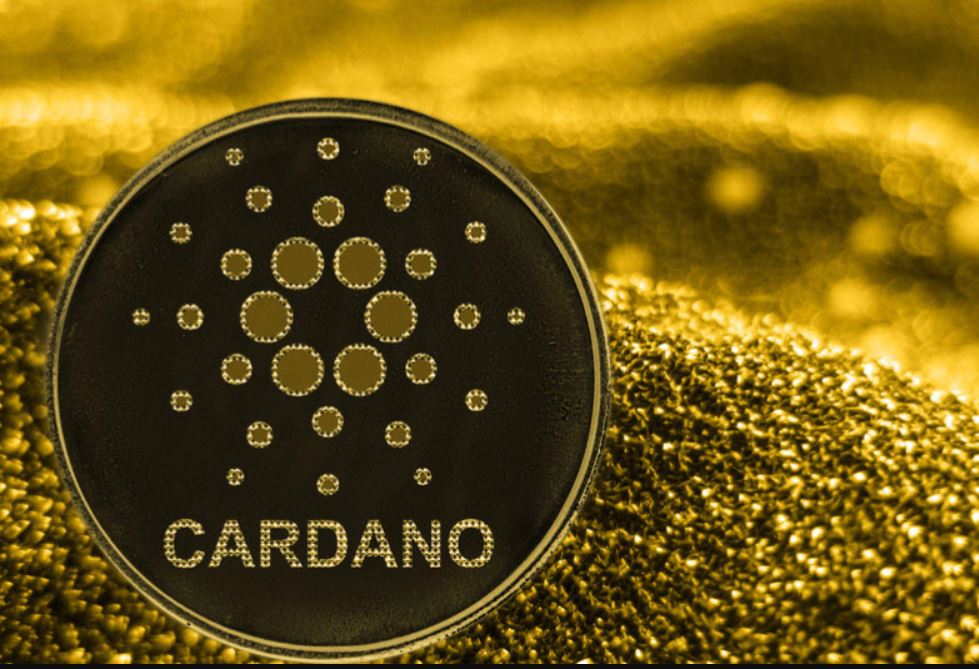Table of Contents
Cryptocurrencies have become a popular investment tool, and many people are looking for ways to get them for free. In this article, we will explore several proven methods on how to get free cryptocurrencies and provide specific examples to help you get started.
1. Cryptocurrency Faucets
Cryptocurrency faucets are websites that give away small amounts of cryptocurrencies for free in exchange for completing simple tasks, such as filling out a captcha or viewing advertisements. This method is ideal for beginners who want to get cryptocurrencies without any initial investment.
Here you can find a list of top earning faucets.
Example: FreeBitcoin
FreeBitcoin is a popular Bitcoin faucet that allows users to earn satoshis (the smallest unit of Bitcoin) every hour. Users simply need to fill out captcha and click the “Roll” button to receive their satoshis. FreeBitcoin also offers lotteries and games to increase your earnings.
2. Airdrops
Airdrops are distribution campaigns where free cryptocurrencies are given to holders of certain cryptocurrencies or to users who meet specific criteria. Airdrops are often used by new projects to promote themselves and attract users.
3. Staking
Staking is the process of holding a certain cryptocurrency in a wallet to support the operation of a blockchain network. In return, users receive rewards in the form of additional cryptocurrencies. This method requires you to already own some cryptocurrencies but offers a passive income.
Example: Cardano Staking
Cardano (ADA) is a popular cryptocurrency that supports staking. Users can stake their ADA tokens through the official Daedalus or Yoroi wallets and earn rewards in the form of additional ADA tokens. Rewards are paid out regularly and depend on the amount of staked tokens and the length of staking.
4. Play-to-earn Games
Cryptocurrency games are online games that reward players with cryptocurrencies or other digital assets for playing. These games combine entertainment with the opportunity to earn cryptocurrencies.
Example: Axie Infinity
Axie Infinity is a popular blockchain game where players collect, breed, and battle virtual pets called Axies. Players can earn cryptocurrencies such as SLP (Small Love Potion) and AXS (Axie Infinity Shards) by completing tasks, battling other players, and breeding Axies. These cryptocurrencies can then be sold on cryptocurrency exchanges.
5. Cryptocurrency Rewards for Purchases
Some platforms and credit cards offer rewards in the form of cryptocurrencies for purchases. This method allows users to earn cryptocurrencies for everyday shopping.
Example: Crypto.com Visa Card
Crypto.com offers a Visa card that allows users to earn cashback in the form of the CRO (Crypto.com Coin) cryptocurrency for everyday purchases. Users can earn up to 8% cashback depending on their card level. CRO tokens can then be used or exchanged for other cryptocurrencies.
6. Participation in Bounty Programs
Bounty programs are campaigns that reward users for completing specific tasks, such as writing articles, promoting on social media, or finding bugs in code. Rewards are often paid in cryptocurrencies.
Example: Bitcointalk Bounty Campaigns
Bitcointalk is a popular cryptocurrency forum where many projects post their bounty campaigns. Users can find campaigns that reward for various tasks, such as content creation, translations, social media promotion, or software testing. Rewards are paid in the project’s cryptocurrencies.
7. Referral Programs
Many cryptocurrency platforms offer referral programs that reward users for bringing in new customers. These rewards can be in the form of cryptocurrencies or fee discounts.
Example: Binance Referral Program
Binance, one of the largest cryptocurrency exchanges, offers a referral program that allows users to earn rewards for bringing in new customers. Users can earn a percentage of the trading fees generated by their referrals. These rewards are paid in cryptocurrencies like Bitcoin or Binance Coin (BNB).
8. Crypto Lending
Crypto lending is the process of lending your cryptocurrencies to other users and earning interest. This method requires you to already own some cryptocurrencies but offers a passive income.
Example: Compound Finance
One of the largest DeFi protocols is Compound Finance. Lending and borrowing rates fluctuate due to its yield farming model, which is an innovative and community-governed lending protocol. There is a wide range of BTC APRs, with a range of 0.04% to 6.5%.
9. Participation in ICOs and IEOs
ICO (Initial Coin Offering) and IEO (Initial Exchange Offering) are ways for new projects to raise funds in exchange for their tokens. Users who participate in these offerings can get tokens at a low price and potentially profit from their growth.
Example: Binance Launchpad
Binance Launchpad is an IEO platform that allows users to invest in new projects and receive their tokens. Users need to hold Binance Coin (BNB) and participate in the token sales on the platform. Successful projects like BitTorrent and Fetch.AI have seen significant growth in the value of their tokens after being launched on Binance Launchpad.
10. Educational Platforms
Some platforms offer rewards in cryptocurrencies for completing educational courses on blockchain and cryptocurrencies. This way, you can not only earn free cryptocurrencies but also gain valuable knowledge about the industry.
Example: Coinbase Earn
Coinbase Earn is an educational program that allows users to earn cryptocurrencies by completing short educational courses on various cryptocurrencies. Users can watch videos, take quizzes, and earn rewards.
11. Participation in Mining
Cryptocurrency mining is the process of validating transactions on a blockchain and securing the network in exchange for rewards in the form of newly created cryptocurrencies. Mining can be costly and requires specialized hardware but offers potentially high returns.
Example: Bitcoin Mining
Bitcoin Mining is the process of mining Bitcoin, which requires specialized hardware called ASIC (Application-Specific Integrated Circuit). Miners compete to solve complex mathematical problems, and for successfully validating a block of transactions, they receive a reward in the form of new Bitcoins. Bitcoin mining can be profitable but requires significant investments in hardware and electricity.
12. Research and Testing Platforms
Some platforms reward users for testing new products, finding bugs, and providing feedback. These rewards are often paid in cryptocurrencies.
Example: Testnet Faucets
Testnet Faucets are websites that give away free testnet cryptocurrencies so that users can test new blockchain projects and applications. Users can receive testnet tokens, which have no real value but can be used to test transactions and features on test networks. One of the sites that allows this activity is Moralis.
13. Loyalty Reward Programs
Some cryptocurrency exchanges and wallets offer loyalty reward programs that allow users to earn cryptocurrencies for trading, holding, or using their services.
Example: KuCoin Bonus
KuCoin is a cryptocurrency exchange that offers a loyalty reward program called KuCoin Bonus. Users who hold KuCoin Token (KCS) tokens receive daily dividends in the form of various cryptocurrencies. The amount of rewards depends on the number of KCS held and the trading volume on the exchange.
14. Participation in Community Activities
Many cryptocurrency projects reward users for participating in community activities, such as voting, discussing on forums, or supporting the project on social media.
Example: Aragon Network
Aragon is a platform for creating and managing decentralized organizations. Users who hold Aragon (ANT) tokens can vote on proposals and changes in the network and receive rewards in the form of ANT tokens for their participation.
15. Crowdfunding and Fundraising Campaigns
Some cryptocurrency projects conduct crowdfunding and fundraising campaigns where users can contribute and receive project tokens as rewards.
16. Educational and Research Grants
Some cryptocurrency foundations and organizations provide grants for education and research in blockchain and cryptocurrencies. These grants can be paid in cryptocurrencies.
Example: Ethereum Foundation Grants
Ethereum Foundation provides grants to support research and development in blockchain and decentralized applications. Users who receive grants are awarded funds in the form of Ethereum (ETH) to support their projects.
17. Social Media and Influencer Marketing
Some cryptocurrency projects collaborate with influencers and social media users to promote their projects in exchange for rewards in cryptocurrencies.
Example: BitClout
BitClout is a blockchain-based social network that allows users to createcreate content and earn rewards based on their online reputation.. Influencers and users can earn rewards in the form of BitClout tokens for their activity on the platform.
How to Get Free Cryptocurrencies: Conclusion
Getting free cryptocurrencies can be fun and rewarding if you know where to look and how to take advantage of the available opportunities. There are many ways how to get free cryptocurrencies, from faucets and airdrops to staking and cryptocurrency games. Before deciding on a specific method, consider your time investment, risks, and potential returns.
This article provided an overview of the best ways to get free cryptocurrencies, and we hope it helps you start your journey in the cryptocurrency world. Always conduct thorough research and carefully read the terms of each platform or project to minimize risks and maximize your earnings.
- Why Online Advertisers Should Request Website Traffic Data from Google Analytics Instead of Using SEO Tools Like MOZ or Ahrefs? - March 24, 2025
- North Carolina’s Bold Move: State Bill Proposes Investing 10% of Public Funds in Bitcoin - March 22, 2025
- Justin Sun Stakes $100 Million in Ethereum on Lido – What Does It Mean for the Market? - March 19, 2025









![How to Buy X Stocks [Twitter] – A Step-by-Step Guide 12 How to Buy X Stocks [Twitter] – A Step-by-Step Guide](https://cryptheory.org/wp-content/uploads/2025/02/2-14-350x250.jpg.webp)
![Best Platforms for Copy Trading in [current_date format=Y] 13 Best Platforms for Copy Trading](https://cryptheory.org/wp-content/uploads/2024/12/copy-trading-350x250.jpg.webp)














